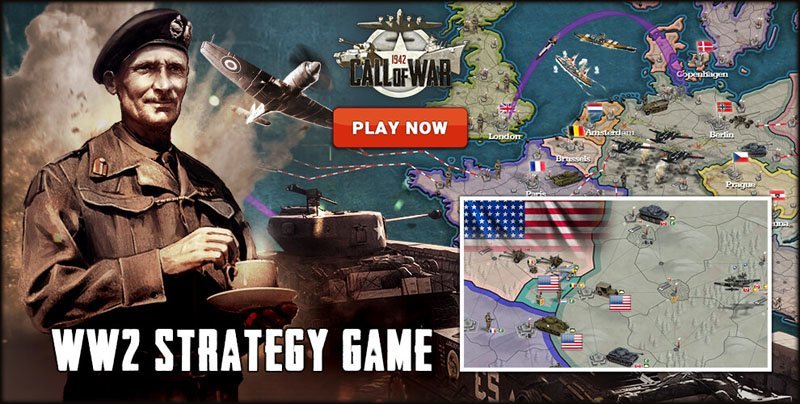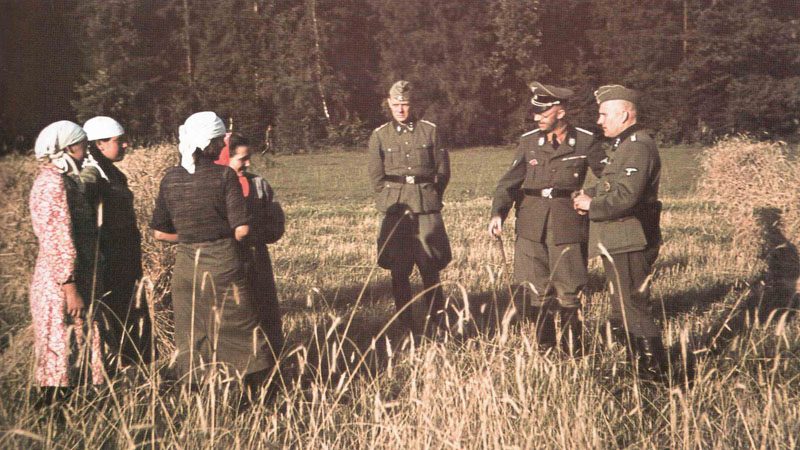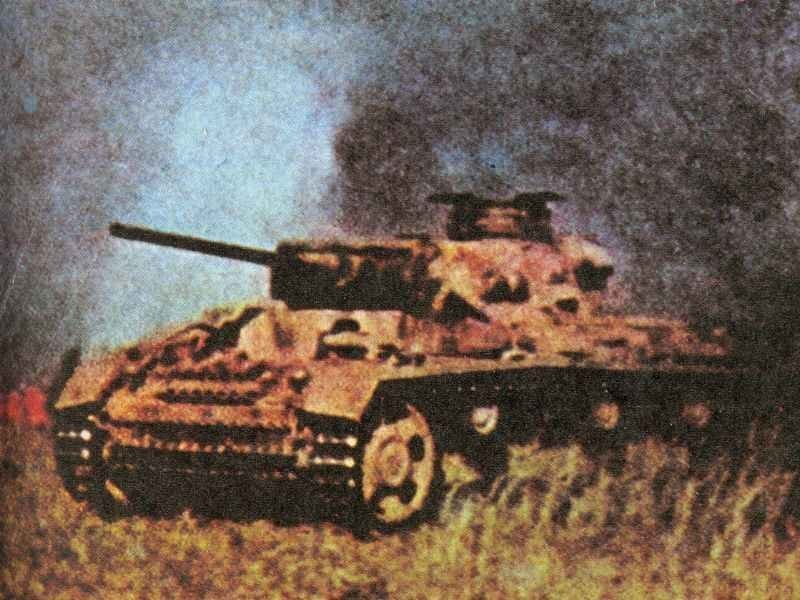The Soviet winter offensive 1941/42 from December 5-6, 1941 and German Orders of Battle from 2 January 1942.
The first major offensive of the Red Army, the counterattack in front of Moscow.
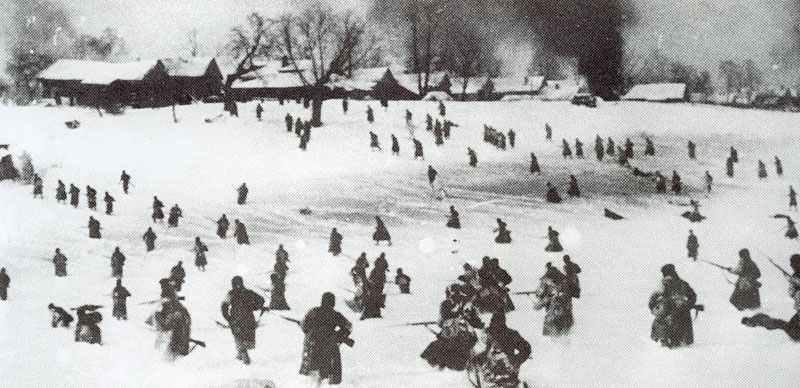

The Soviet winter offensive 1941-42
Table of Contents
By December 1941, Germany’s Operation Barbarossa had pushed deep into Soviet territory, reaching the outskirts of Moscow. The German forces had advanced over 600 miles from their starting positions but were increasingly stretched, exhausted, and unprepared for the harsh Russian winter.
Overview
Launch of the Counter-Offensive:
On December 5-6, 1941, the Red Army launched a major counter-offensive just as German forces were within sight of the Kremlin’s spires. This counter-stroke was commanded by General Georgy Zhukov, who had carefully assembled reserve forces from Siberia and the Far East – troops who were equipped and trained for winter warfare.
Key Elements and Battles:
- Moscow Counter-Offensive (December 5-6, 1941):
– Soviet forces attacked German Army Group Center.
– Temperature plunged to -40°F, freezing German equipment and soldiers.
– German advance halted approximately 12 miles from Moscow. - Kalinin Front Operations:
– Soviet forces recaptured Kalinin on December 16.
– Threatened German flanks north of Moscow. - Southwestern and Southern Fronts:
– Attacks against German Army Group South.
– Recaptured Rostov-on-Don.
Results and Significance:
– The Red Army pushed German forces back 60-150 miles from Moscow
– First major German defeat in World War II
– Hitler’s “no retreat” order (December 16) prevented tactical withdrawals
– Ended the myth of German invincibility
– Forced the cancellation of Operation Typhoon (the plan to capture Moscow)
Strategic Impact:
The counter-offensive fundamentally changed the nature of the Eastern Front campaign. While not destroying German forces outright, it:
1. Relieved the immediate threat to Moscow
2. Bought the Soviets critical time to reorganize and increase production
3. Forced Hitler to abandon the strategy of a quick victory
4. Transformed the conflict into a war of attrition that favored Soviet resources
Limitations:
Despite its success, the Soviet counter-offensive eventually ran out of momentum by March 1942. Soviet forces lacked the experience and logistics for sustained offensive operations, and German defensive capabilities remained strong despite their retreat.
The counter-offensive marked a turning point, though the war on the Eastern Front would continue for more than three more years with tremendous casualties on both sides.
Course of the Soviet counter-offensive
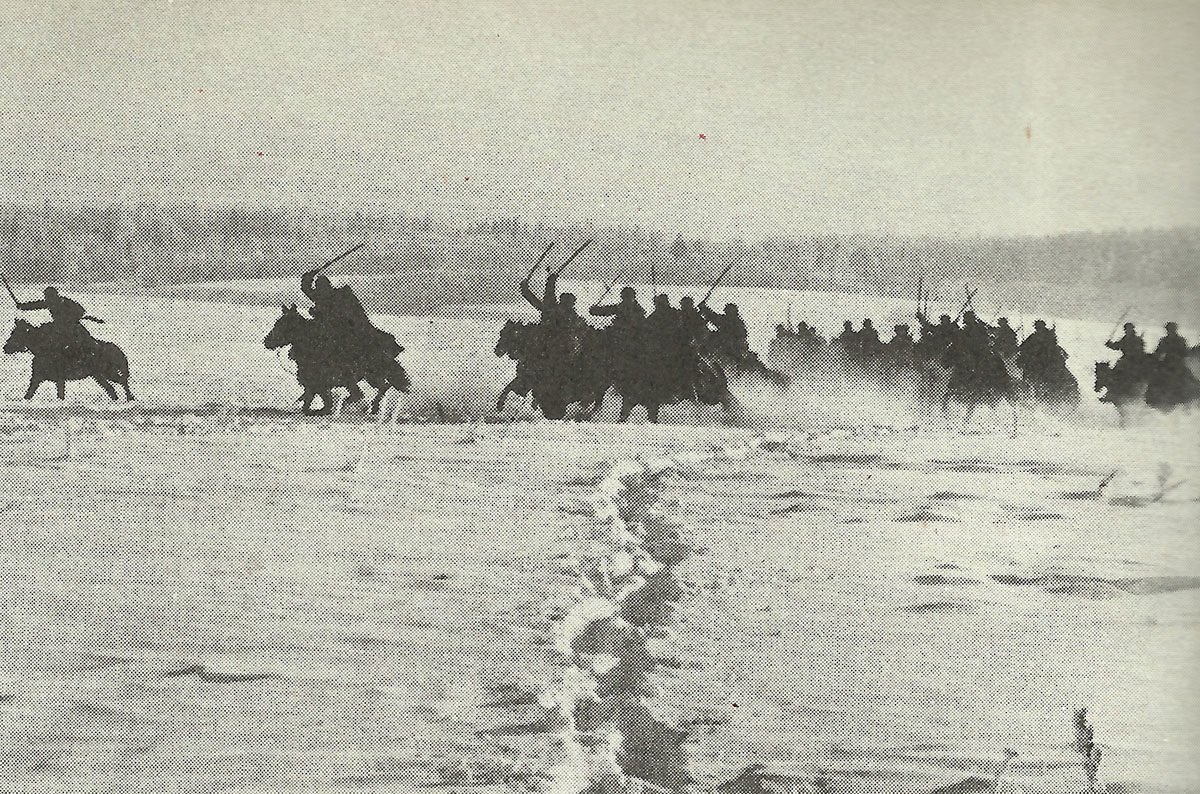
On December 5, 1941, the Red Army launches its counteroffensive in front of Moscow against the German Army Group Center, surprising both its western allies and the Germans.
The previous limited but successful Soviet attacks on the northern section at Tikhvin and in the south at Rostov meant that the overstretched German forces of Army Group Center, which were exhausted and had already had to halt their own offensive on Moscow, could not receive substantial reinforcements from the other sections of the front.
Both north and south of the capital, mainly newly deployed Soviet units ran into the exposed positions of the German pincer movements, which reached all the way to Moscow. Immediately thereafter, the Red Army also advanced westward between these pincers.
Careful preparations and a clever timetable characterized a Soviet offensive operation, directed and largely planned by Zhukov, that took the Germans completely by surprise. Although the balance of forces was only slightly in favor of the Russians, their superior equipment under this weather conditions and the fact that many of the attacking units were rested, while at the same time German troops were exhausted and caught by surprise, gave the Red Army a considerable advantage.
Spurred on by Stalin and the spirit of optimism that accompanied the largest Soviet offensive of the war to date, the Russian troops shattered the German pincer spearheads, pushed into the Germans’ rear in places, and, especially in the area northwest of Moscow, quickly threatened to cut off and destroy large portions of the German forces that had come closest to the city.
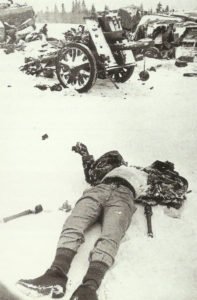
The fierce fighting that ensued in the last days of 1941 was characterized by several key features.
First, despite some local setbacks, the Red Army managed to penetrate and push back the German lines, inflicting heavy losses on the entire central part of the front.
Second, in the process, the Germans not only suffered heavy losses from the fighting and frost, but also lost large amounts of equipment, which simply could not be withdrawn and in some cases had to be destroyed by themselves.
Third, a panic clearly developed in many German units, as soldiers not at all equipped for winter warfare faced a determined and obviously clearly superior enemy.
Nevertheless, and this is the crucial fourth point, the Red Army, despite its great victories, was unable to encircle and destroy major German formations. Sometimes with and sometimes against Hitler‘s orders, the German generals on the ground did what they could to dislodge trapped formations or retake the lines, while the German soldiers fought desperately to maintain cohesion and hold their positions.
The Myth of the Siberian Divisions
The well-equipped and veteran Siberian divisions were in the Far East at the beginning of the Russian campaign to secure Soviet borders there against Japan. They were supposedly withdrawn in October and November 1941 to defend Moscow and the planned Soviet counteroffensive after Stalin learned from his top spy at the German embassy in Japan, Richard Sorge, that Japan would not attack Russia.
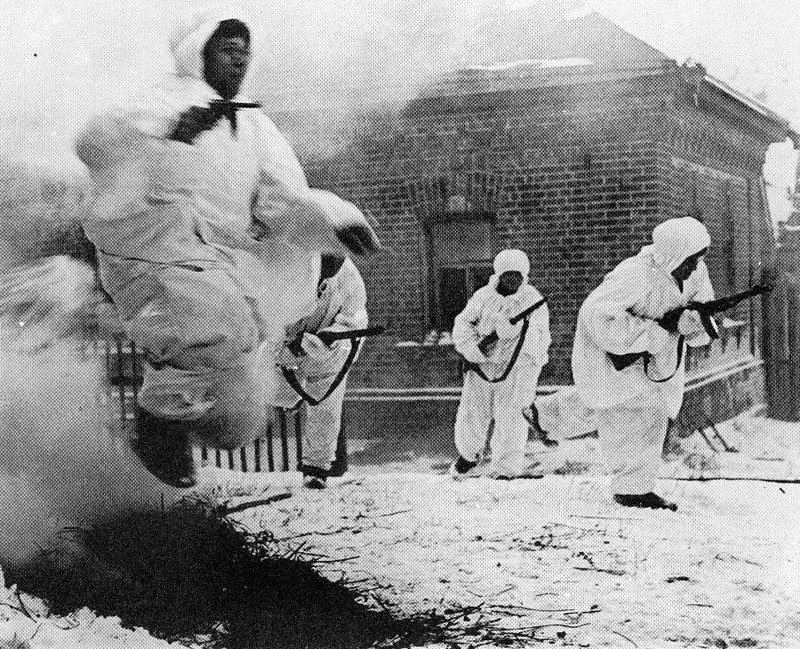
However, only 14 divisions were actually withdrawn from the eastern part of the Soviet Union, and they were withdrawn as early as the end of July 1941. The order to transfer the 24th Soviet Army with six rifle divisions from Siberia was given even before the outbreak of war. Two of its Siberian divisions were destroyed in the Vyazma pocket, while the others were practically wiped out by the end of October 1941.
Of the total of 14 divisions brought in from the east, two were small cavalry divisions from Central Asia and three were armored and mechanized divisions whose personnel had nothing to do with Siberia.
Of the rifle divisions, three arrived in the west in August and September and were sent to the 11th Army in front of Leningrad or to the 7th Army against the Finns. Six more Siberian rifle divisions arrived at the front in October, four of which were used against Army Group Center in defense of Moscow. Of these, the 32nd Rifle Division stood out, putting up heroic resistance at Borodino in October 1941, but it was originally from the Volga Military District and only a few of its soldiers were from Siberia.
Another six Siberian Rifle Divisions were formed after the war began, which were deployed on the Volkhov River near Leningrad in November 1941. They were all freshly formed and had no combat experience.
If it was not the Siberians, what troops then stopped the Germans before Moscow and carried out the counteroffensive ?
The Red Army newly raised 182 rifle divisions, 43 militia rifle divisions, 8 armored divisions, 3 mechanized divisions, 50 smaller cavalry divisions, 62 armored brigades, 55 rifle brigades, 21 naval brigades, 11 marine brigades in the second half of 1941 – this was the largest military mobilization action ever !
It was not the Siberians who saved Stalin’s Soviet Union, but the mass of inexperienced new units.
Apparently, both the Wehrmacht reports and the Soviet propaganda invented the elite soldiers from Siberia. The Germans to make their defeat before Moscow more plausible, and the Russians to boost the morale of their poorly trained recruits.
Consequences of the Soviet Counteroffensive
The victory of the Red Army and the catastrophe suffered by the German army in the first ten days after December 5 led to new decisions of far-reaching importance on both sides of the front, which influenced each other in ways that neither Hitler nor Stalin could have foreseen.
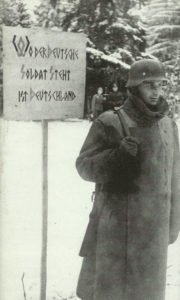
On the German side, the possibility of a total destruction of the army, a demoralizing general retreat on the scale of the Napoleonic catastrophe, and the loss of much of the equipment caused Hitler to order Army Group Center to hold its ground, not to retreat a foot, risking the loss of the entire force.
What reinforcements could be mustered were brought forward by trains. But since there were no prepared rear positions to fall back to and no way to lead back the heavy equipment, the German units had to fight at the front where they stood, even if the front line was torn open.
Simultaneous with the desperate attempt to make reinforcements available, there was a whole series of changes in the top structure. One of the generals dismissed in early January, the commander-in-chief of the 3rd Panzer Army, General Hoepner, had rescued and lead back two of his encircled corps in violation of Hitler’s Halt order. He was not only relieved but also dishonorably discharged from the army and declared to have lost all his pensions.
Since the latter could not be done without a proper court-martial, Hitler, after the front was stabilized, caused the Reichstag to convene a session in April 1942 to repeal all laws and ordinances that protected the rights of German citizens.
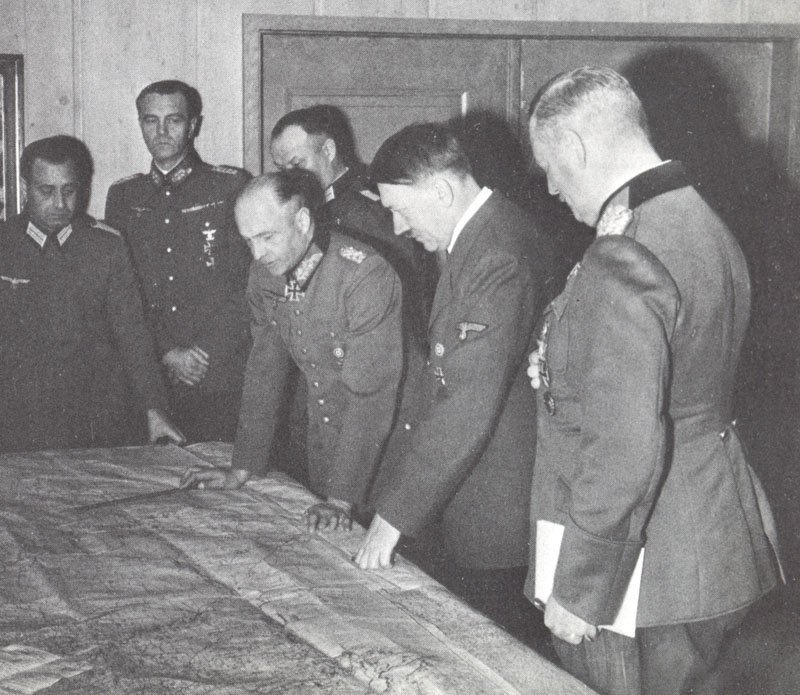
Already on December 19, Hitler had accepted the resignation of von Brauchitsch, the commander-in-chief of the German army. At the same time or shortly thereafter, many other generals were also dismissed.
All three commanders-in-chief of the army groups and a number of army commanders were replaced. Hitler apparently intended to replace the Army Chief of Staff, General Halder, as well, but then changed his mind. Hitler himself wanted to take over the position of von Brauchitsch, and the other positions were filled by generals from higher ranks from the army.
Such extensive replacements of high-ranking officers, many of whom had become well-known in Germany because of their prominent earlier roles in the war, did little to stabilize morale at home.
News of Japan’s attack and Hitler’s declaration of war to the USA were quickly followed by major reports of victory from East Asia, but these temporary distractions now gave way to bad news from the Eastern Front. A general appeal to the population to donate warm winter clothing, especially furs, for the troops immediately followed. This gave the German population its first really clear picture that things had gone drastically wrong.
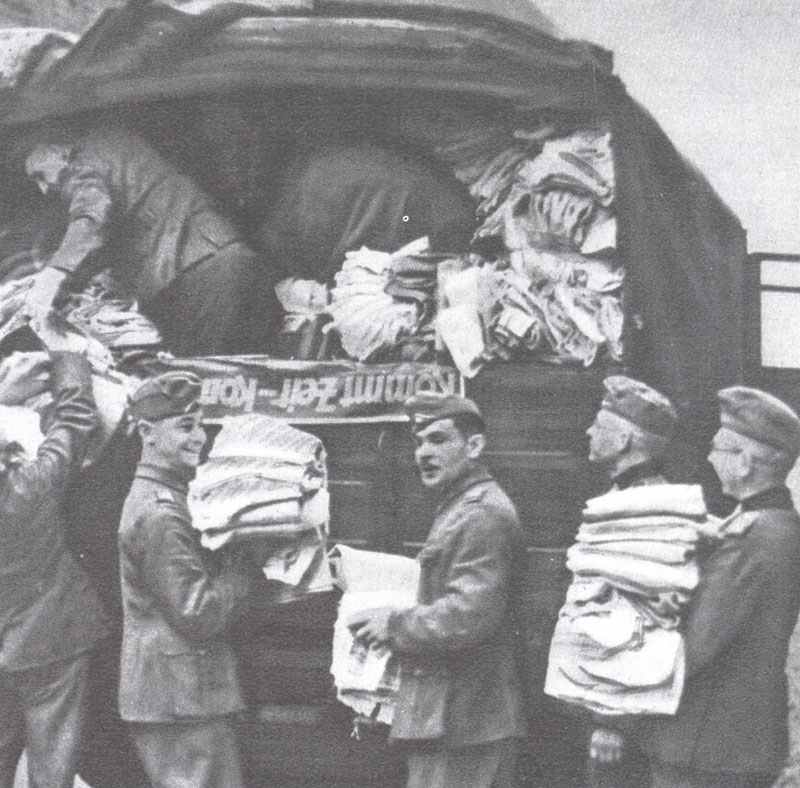
For the German troops, the new orders and commanders meant a desperate struggle to hold out. There is some evidence that the still unshakable confidence of the soldiers in Hitler contributed to their placing their hopes in him as the new commander-in-chief of the army, and that this prevented the otherwise threatened collapse of morale and the front.
However, the new commander-in-chief of Army Group Center, von Kluge, was no more able to stop the Red Army than his predecessor. In fierce fighting, the Germans were pushed back further and further with heavy losses in men and matériel.
Some reinforcements reached the front, but never as many as promised. The authorized retreats did not shorten the lines sufficiently to facilitate the subsequent defense, and the temporary holding out of isolated German units did not deter the Russians from advancing further.
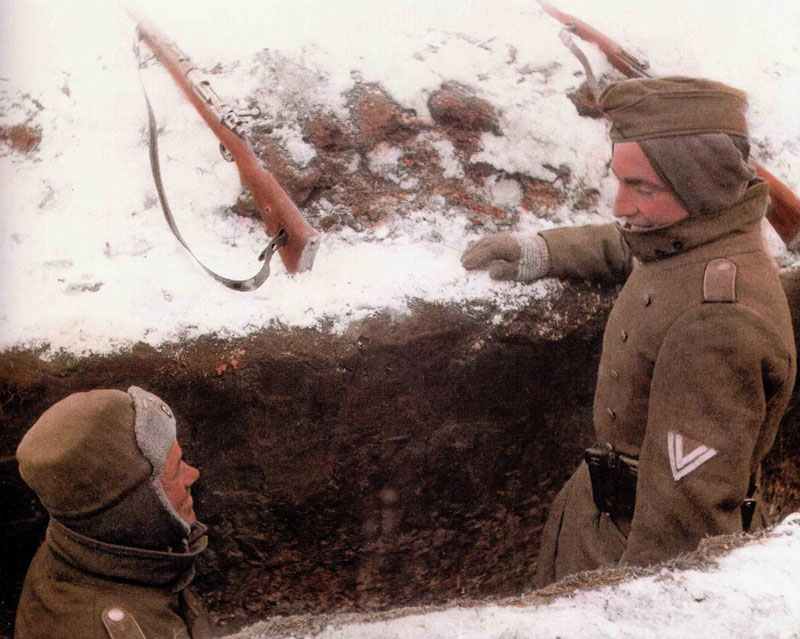
By the end of January, when a badly battered Army Group Center was still in the field, albeit in a most unfavorable front line, several factors had led to this stabilization rather than to the total disaster that repeatedly seemed imminent.
One factor was undoubtedly the skill of the experienced German senior officers. A second factor was the desperate cohesion of small units that had suffered defeat but still stuck together and fought on to survive.
The third factor was the Red Army’s narrow superiority, relying mainly on fresh recruits. Although German propaganda always reported overwhelming Russian strength with their Siberian soldiers superbly equipped for winter warfare, the reality was quite different.
The inexperience of ordinary soldiers and especially Soviet officers, along with incredible stubbornness, also helped the Germans hold out. The most important aid to Hitler, however, was almost certainly Stalin’s decision to launch an extremely ambitious general counteroffensive in the hope of crushing the entire German eastern front. In reality, the opportunities for a real major victory were greatest in the use of all possible troops only against the German Army Group Center !
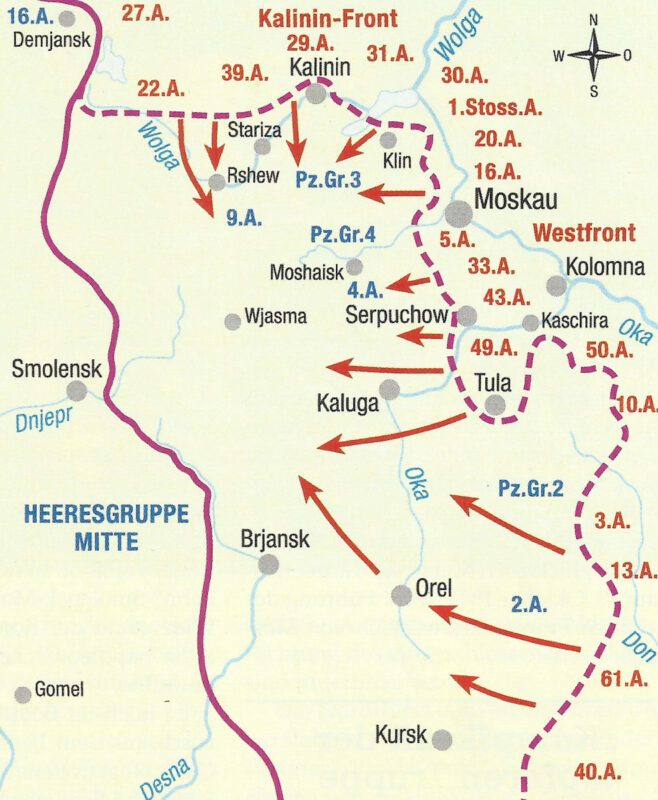
In mid-December 1941, when German defeat in front of Moscow was already apparent and rightly celebrated in Soviet pronouncements, Stalin called for major offensive operations on other sections of the front.
After the Red Army recaptured Tikhvin on December 9, a large-scale offensive was to be undertaken to break the siege of Leningrad and encircle a large part of the German Army Group North. In addition, major advances were to be made into Ukraine and the Crimea, while thrusts into the deep flanks of the German Army Group Center were to cut it off in a huge pocket similar to that which the Germans had so effectively demonstrated in the summer and fall.
Success in these operations would wear down the German armies and ensure the rapid liberation of all areas lost since June. The newly mobilized and reestablished formations at the Stavka’s disposal were to be used in these advances.
To Stalin, it looked as if the overstretched and exhausted Wehrmacht could be staggered by hard and essentially simultaneous blows on all the major sections of the front. Also, morale on the Soviet home front would certainly be boosted by the liberation of towns previously captured by the Nazis.

German Orders of Battle from January 2, 1942
Schematic layout of the German Wehrmacht from January 2, 1942:
Abbreviations:
Inf.Div. = infantry division
mot.Inf.Div. = motorized infantry division
Pz.Div. = Panzer (tank, armoured) Division
Sec.Div. = Security Division
Inf.Reg. = Infantry Regiment
Brig. = Brigade
Btl. = Battalion
Cav. = Cavalry
Mt. = Mountain troops
Air = Airborne troops
Gr. = Group (battle group)
W.B. = Wehrmacht commander
Befh. r.H.G. = Commander Rear Army Area
Eastern Front
Army Group South
Army | Corps | Divisions |
|---|---|---|
Reserves | 88. Inf.Div. (in the approach, OKH Reserve) |
|
11 Army | Reserves | 18. Romanian Inf.Div. |
LIV. | 22., 24., 30., 132. Inf.Div. |
|
XXX. | 1. Romanian Mt.Brig., 2/3 von 72. Inf.Div. |
|
XXXXII. | 46., 170. Inf.Div., 1/3 each of 72. und 73. Inf.Div., Romanian fast Reg. |
|
Romanian Mountain (subordinated to XXXXII. Corps) | 4. Romanian Mt.Brig., 8. Romanian Cav.Brig., 3. Romanian mot.Reg. |
|
1 Panzer Army | Reserves: Staff XI. Corps | 5., 6. Romanian Cav.Brig., 2/3 of 73. Inf.Div. |
III. mot. | LSSAH, 60. mot.Inf.Div., 13., 14. Pz.Div., 125. Inf.Div. |
|
XIV. mot. | ||
XXXXIX. Mt. | 1., 4. Mt.Div., 198. Inf.Div., 7. Air Div. (elements), Italian 3. Celere Div. |
|
Italian Fast Corps | Italian 52. Torino, Italian 9. Pasubio Div. |
|
17 Army | LII. | 111. Inf.Div., 97., 101. light Div. |
VI. | 76., 94. Inf.Div., 2/3 of 9. Inf.Div. |
|
XXXXIV. | 68., 257., 295., 298. Inf.Div, 1/3 of 9. Inf.Div. |
|
6 Armee | Reserves | 62. Inf.Div. |
LI. | 44., 297. Inf.Div., 2/3 of 57. Inf.Div. |
|
XVII. | 79., 294. Inf.Div. |
|
XXIX. | 75. Inf.Div., 2/3 each of 168., 299. Inf.Div., 1/3 of 57. Inf.Div. |
|
Befh. r.H.G. Süd | 213., 444. Sec.Div., 202. Replacements Brig., |
|
Reserves (in the approach) | 102., 105., 108. Hungarian .Brig. |
|
Wehrmachts Commander Ukraine | 454. Sec.Div., Slovak Sec.Div., 10. Romanian Inf.Div. |
Army Group Center
Army | Corps | Divisions |
|---|---|---|
OKH Reserves (all in approach) | from WK I, Gen.Gov.(Poland) and Walküre units | 83. Inf.Div. (to Malkinia river), 328. Inf.Div. (Suwalki), 329. Inf.Div. (Lyck), 330. Inf.Div. (Siedlce-Platerow), 331. Inf.Div. (Lukow-Terespol) |
Reserves | 208. Inf.Div. (in the approach) |
|
2 Army | XXXXVIII. mot. | 1/3 of 168. Inf.Div., 16. mot.Inf.Div., 9. Pz.Div. |
LV. | 45., 95. Inf.Div., 1/3 each of 168. and 299. Inf.Div., SS-Brigade 1, 3. Pz.Div., 221. Sec.Div. |
|
XXXV. | 134., 262., 293. Inf.Div., 1/3 of 56. Inf.Div. |
|
2 Panzer Army | XXXXVII. mot. | 17., 18. Pz.Div., 25., 29. mot. Inf.Div. |
LIII. | elements of 10. mot.Inf.Div. and 4. Pz.Div., 112., 167., 296. Inf.Div., 1/3 of 56. Inf.Div., Inf.Reg. GD |
|
XXIV. mot. | Gr. Eberbach (elements 10. mot. Inf.Div.), Gr. Usinger |
|
4 Army | XXXX. mot. | 19. Pz.Div. (bulk), 216. Inf. Div., 10. mot.Inf.Div. (elements), 403. Sec.Div. (elements), 56. Inf.Div. (elements) |
XXXXIII. | 31., 131., 137. Inf.Div., 1/3 of 52. Inf.Div., Police Reg., 4. SS-Reg. |
|
XIII. | 260., 268. Inf.Div., 2/3 of 52. Inf.Div. |
|
XII. | 17., 263. Inf.Div. |
|
LVII. mot. | 34., 98. Inf.Div., 19. Pz.Div. (elements) |
|
XX. | 15., 183., 258., 292. Inf.Div., 10. Pz.Div. (elements) |
|
4 Panzer Army | VII. | 7., 197., 255., 267. Inf.Div., 3. mot.Inf.Div., French Volunteers Reg. |
? (no entry) | 18., 87., 252. Inf.Div., 20. Pz.Div. |
|
XXXXVI. mot. | SS-Div. Reich, 5., 11. Pz.Div., 10. Pz.Div. (elements) |
|
V. | 23., 35., 106. Inf.Div., 6. Pz.Div. |
|
3 Panzer Army (subordinated to 4 Panzer Army) | LVI. mot. | 14. mot.Inf.Div., 7. Pz.Div., Brigade 900 |
XXXXI. mot. | 1., 2. Pz.Div., 36. mot.Inf.Div. |
|
9 Army | Reserves | SS-Cav.-Brig. |
XXVII. | 86., 129., 162., 251. Inf.Div. |
|
VI. | 6., 26., 110., 161. Inf.Div., 1/3 of 339. Inf.Div. |
|
XXIII. | 102., 206., 253., 256. Inf.Div.,, 1/3 of 81. Inf.Div. (in the approach) |
|
Befh. r.H.G. Mitte (Center) | 707. Inf.Div. (W.B. Ostland), 2/3 of 339. Inf.Div., 286., 403. Sec.Div., 221. Sec.Div. (elements), in the approach Sec.Brig. 202 and 203 |
Army Group North
Army | Corps | Divisions |
|---|---|---|
Reserves | 225. Inf.Div., 1/3 of 81. Inf.Div. (all in the approach) |
|
16 Army | Reserves | 18. mot.Inf.Div., 1. Abteilung of Pz.Reg. 203 |
II. | 12., 32., 123. Inf.Div. |
|
X. | SS-Totenkopf, 30., 290. Inf.Div. |
|
XXXVIII. | 126. Inf.Div., 250. Spanish Inf.Div. |
|
XXXIX. mot. | 61., 215. Inf.Div., 20. mot.Inf.Div., 1/3 of 81. Inf.Div. (in the approach) |
|
18 Army | Reserves | 8. Pz.Div. (bulk), 12. Pz.Div., SS-Reg.9 |
I. | 11., 21., 254., 291. Inf.Div. |
|
XXVIII. | 1., 96., 223., 227., 269. Inf.Div. |
|
L. | 58., 121., 122. Inf.Div., 8. Pz.Div. (elements), SS Police Div. |
|
XXVI. | 93., 212., 217. Inf.Div. |
|
Befh. r.H.G. Nord | 207., 281., 285. Sec.Div. |
OKW Theaters
AOK Norway
Army | Corps | Divisions |
|---|---|---|
AOK Norway | Reserves | 5. Mt.Div. (remains) |
Connection Staff North (with Finnish Karelia Army) | 163. Inf.Div. |
|
III. Finnish | 3. Finnish Inf.Div., SS-Div. Nord (North) |
|
XXXXVI. Mt. | 6. Finnish Inf.Div., 169. Inf.Div. |
|
Mt.Corps Norway | 2., 6. Mt.Div. |
|
Section Coastal Staff North Norway | 199., 702. Inf.Div. |
|
XXXIII. | 181., 196. Inf.Div. |
|
LXX. | 69., 214., 710. Inf.Div. |
Army Group D (Commander West)
Army | Corps | Divisions |
|---|---|---|
Commander of troops in the Netherlands | 82., 719. Inf.Div. |
|
15 Army | XXXVII. | 71., 304., 306., 321., 340. Inf.Div. |
XXXII. | 302., 332., 336., 716. Inf.Div. |
|
LX. | 319., 320., 323., 711. Inf.Div. |
|
1 Army | Reserves | 23. Pz.Div. (under creation), Pz.Brig. 100 |
VIII. | 5., 8., 28. light Div. |
|
XXXXV. | 337., 712. Inf.Div. |
|
XXV. | 205., 211., 335., 709. Inf.Div. |
|
LIX. (in deportation from 4.1.1942) | 305., 327., 715. Inf.Div., 246. Inf.Div (in deportation from 3.1.1942), 22. Pz.Div. (under creation) |
|
XXXI. | 333., 708. Inf.Div. |
Southeast
Army | Corps | Divisions |
|---|---|---|
12 Army | Fortress Div. Crete (under creation) | 164., 713. Inf.Div., Inf.Reg. 125 |
LXV. (Serbia) | 342., 704., 714., 717., 718. Inf.Div., 113 Inf.Div. (in deportation from 7.1.1942) |
Africa
Army | Corps | Divisions |
|---|---|---|
Panzer Group Africa | Sollum-Bardia Front | 90. light Div., Italian 55. Savona-Div., 1 1/2 German Btl. |
X. + XXI. Italian | Italian 17. Pavia, Italian 25. Bologna, Italian 102. mot.Div. Trento, Italian. 27. Brescia |
|
Group Crüwell (subordinated to Panzer Group Africa) | DAK | 15., 21. Pz.Div. |
ital. mot. Corps Marmarica | Italian 132. Armoured Div. Ariete, Italian 101. mot.Inf.Div. Trieste |
Chief of Army Armament and Commander Replacement Army
in formation: 384th Inf.Div. (Königsbruck), 385th Inf.Div. (Bergen)
in Germany: 3rd Mt.Div. (bulk, in deportation), 7th Mt.Div. (Grafenwöhr, in deportation), 5th Mt.Div. (in deportation), 24th Pz.Div. (WK I), Staff XVIII. Mt.Corps
in Denmark: 218th, 416th Inf.Div.

References and literature
Der 2. Weltkrieg (C. Bertelsmann Verlag)
Zweiter Weltkrieg in Bildern (Mathias Färber)
A World at Arms – A Global History of World War II (Gerhard L. Weinberg)
Der Grosse Atlas zum II. Weltkrieg (Peter Young)
Krieg der Panzer (Piekalkiewicz)
Operation Barbarossa: the Complete Organisational and Statistical Analysis, and Military Simulation, Volume I – IIIB (Nigel Askey)
Kriegstagebuch des Oberkommandos der Wehrmacht, Band 1-8 (Percy E. Schramm)





